Sanwa SP-18D Handleiding
Sanwa
Multimeter
SP-18D
Bekijk gratis de handleiding van Sanwa SP-18D (1 pagina’s), behorend tot de categorie Multimeter. Deze gids werd als nuttig beoordeeld door 80 mensen en kreeg gemiddeld 3.6 sterren uit 40.5 reviews. Heb je een vraag over Sanwa SP-18D of wil je andere gebruikers van dit product iets vragen? Stel een vraag
Pagina 1/1

SAFETY PRECAUTIONS
This instruction manual explains how to use your multitester SP-18D ,
safely.
Before use, please read this manual thoroughly. After reading it, keep it
together with the product for reference to it when necessary.
The instruction given under the heading ”
WARNING
” ”
CA TIU ON
”
must be followed to prevent accidental burn or electrical shock.
Warning Instruction for Safe Use
To ensure that the meter is used safely, be sure to observe th e
instruction when using the instrument.
Please be careful that the protection circuit may be undermined by
unjustifiable usage that does not follow the guidelines in the instruc -
t n mio anual.
11. .Never use the meter on the electric circuits that exceed 6 kVA
12. sPay special attention when measuring the voltage of AC 33 Vrm
(46.7 V peak) or DC 70 V or more to avoid injury.
13. tNever apply an input signals exceeding the maximum rating inpu
v ue.al
14. -Never use the meter for measuring the line connected with equip
ment (i.e. motors) that generates induced or surge voltage since it
may exceed the maximum allowable voltage.
15. .Never use the meter if the meter or test leads are damaged or broken
16. .Never use uncased meter
17. a aBe sure to use fuse of the specified rating or type. Never use
substitute of the fuse or never make a short circuit of the fuse.
18. eAlways keep your fingers behind the finger guards on the prob
when making measurements.
19. gBe sure to disconnect the test pins from the circuit when changin
the fun tic on or range.
10. e s t g Befor tar in meas t, keuremen ma sure t t e f n andha th un ioct
range are properly set in accordance with the measurement.
11. .Never use the meter with wet hands or in a damp environment
12 Never open rear case except when replacing batteries or fuse.. Do
not attempt any .alteration of original specifications
13 To ensure safety and maintain accuracy, calibrate and check th. e
tester at least once a year.
14 Indoor use. .
WARNING
PRECAUTION
1 byAvoid giving the tester any excessive shock or vibration
loading it on the motorbike and the like.
2 Keep off dust and moisture from the tester.
3 a a hDo not leave the tester for long time in places of hig
temperatrue (higher than 55 high humidity (highe ) a ℃ r
than 80 %), and dew condensation.
4 tThe meter cover is treated with antistatic coating. Do no
wipe it hard or clean it with volatile solvent. Use sof a t
brush to remove dust.
MAXIMUM OVERLOAD PROTECTION INPUT
Function (Range) Maximu rating
input value
DC 1000 V, AC 750 V
or PEAK MAX 1100 V
*DC, AC 200 V
or PEAK MAX 250 V
Maximum overload
protection input
Note : AC voltage is regulated by rms value of sinusoidal wave.
”*” is within 5 second.
1.5V
DCV 120 600~
ACV 120 600~
DCV 0.3 30~
ACV 12 30~
DCA 30 m/0.3
DCA 60 µ
Ω
Full scale
value at
the ranges
Voltage and current
input prohibited
DC 2 V
SP-18D
MULTITESTER
INSTRUCTION MANUAL Dempa Bldg., 4-4 Sotokanda 2-Chome
Chiyoda-ku, Tokyo, Japan
Thank you for purchasing a SANWA tester, Model SP-18D. You ar e
kindly requested to thoroughly read this manual before use fo r
safety. Especially, "SAFETY INFORMATION" and "MEASURIN G
PROCEDURE" are important. Keep this manual together with th e
tester not to lose it.
Measuring DCV
1 toSet the range selector knob
an appropriate DCV range.
2 Apply the black test pin to the
minus potential of measure d
circuit and the red test pin to
the plus potential.
3 Read the move of the pointer
by V and A scale.
WARNING
Confirm the range to use before measurement.
Preparation for Measurement
1 :Adjustment of meter zero position
Turn the zero position adjuster so that the pointer may alig n
right to the zero position.
2 Range selection:
Select a range proper for the item to be measured set the
range selector knob accordingly.
When determining a rmeasuring range, select such one fo
high ler vo tage th the an value be s asto mea ured as well
where the pointer of a meter moves to a considerable extent.
However, select the maximum range and measure in cas e
the extent of value to be measured can not be predicted.
NOTE
Measuring ACV ~
1 .Turn the range selector knob to an appropriate ACV range
2 Apply the test pin to the measured circuit.
3 V A VRead the move of the pointer by and scale. (Use AC 12
scale for 12 V range only.)
•Since sthis instrument employ
the means value system for it s
AC voltage measurement circuit ,
AC waveform other than sin e
wave may cause error.
•There hoccurs error under suc
frequencies other than specifie d
in the specification.
Measuring DCA
1 .Turn the range selector knob to an appropriate DCA range
2 e out m d c d a ly the black test toTak ea resu ir itcu an pp pin
the minus potential of meas-
ured circuit and the red tes t
pin to the plus potential.
3 Read the move of the pointer
by V and A scale.
WARNING
Connect the meter in series with the load.
Cut off.
Measuring Ω
1 Turn the range selector knob to an appropriate Ωrange.
2 0 soShort the red and black test pins and turn the Ωadjuster
that the pointer may align exactly to 0 . (If the pointer failsΩ
to swing up to 0 even when the 0 adjuster is turnedΩ Ω
clock )wise fully, replace the internal battery with a fresh one.
3 dApply the test pin to measure
resistance.
4 Read the move of the pointer by
Ωscale.
Note: + - sThe polarity of and turn
reverse to that of the test pins
when measurement is done in
Ωrange.
Note: Be sure to use the same rated fuse. In case a fuse other
than the same rated one (see “SPECIFICATIONS“) is
used, error in indication occurs and/or circuit protection
is made unable.
Note: Operating voltage of range for this tester is 3 V and,Ω
accordingly, operator can make lighting test of LED.
X10 range is optimum for the test.
WARNING
Do not measure a resistance in a circuit where a
voltage is present.
Battery Test ,
1 .Set the selector knob to or
2 )Apply the black test pin to the (-
battery terminal and red test pin to
the (+) battery terminal.
3 m e i rRead the ov of the po nte
or scale.
•range: 20 loadΩ
For measure the cylindrical typ e
battery (R03, R6, R14, R20, LR03 ,
LR6, LR14, LR20, etc.)
•range: 60 k loadΩ
For measure the button type battery (SR43, SR44, LR43 ,
LR44, PR41, PR44, etc.)
Measuring Capacity µF
1 orSet the range selector knob to µF X1
µF X100.
2 Measure capacitance by applying the
test pin to the capacitor to be mea sured
after adjustment made in th 0 Ω e
same manner as in the resistanc e
measurement.
3 eThe pointer moves full scale by the charge current to th
capacitor. However, the pointer starts gradual returning from a
certain point. Read the indicated maximum value on µF scale.
Note: rBe sure to short circuit the both ends of the capacitor fo
discharge prior to the initial measurement or in such cas e
to measure after the measurement was once made.
Note: .Pay due attention to the polarity (+ and -) of the capacitor
(Connect side of the capacitor to black test pin of th + e
tester.)
SCALE READING
ΩX 100 k X 100 k
ΩX 1 k X 1 k
ΩX 10 X 10
ΩX 1 X 1
DCV 30 X 0.1
DCV 3 X 0.01
DCV 0.3 X 0.001
ACV 300 X 1
ACV 30 X 0.1
DCA 0.3 X 0.001
DCA 30 m X 0.1
DCV 600 X 10
ACV 600 X 10
DCA 60 µ X 1
DCV 120 X 10
DCV 12 X 1
ACV 120 X 10
ACV 12 X 1
µF X 100 X 100
µF X 1 X 1
X 1
X 1
1.5V
1.5V
NAMES OF COMPONENTS BODY COVER, TEST LEADS, HAND STRAP
Use of Cover (example for the body cover)
When this tester is out of use:
Attach the cover to the panel face for safekeeping.
When measuring:
Attach it either to the rear case sid e
or use it as a stand as illustrated.
Store of Test Leads
When placing the test leads in th e
storing space, roll it times, then pu 3 t
in the test pin side first for store in
the place (test lead store space) as
illustrated.
Attachment of Hand Strap
1 Loosen the screw fixing the rear
case and remove it.
2 -Hand strap is attached to con
necting point.
3 dPut back the rear case was an
fix it with the screw.
MAINTENANCE
How to Replace Battery
1 rLoosen the screw fixing the rea
case and remove it.
2 Replace R6 (UM-3) dry battery.
3 itPut back the rear case where
was and fix it with the screw.
How to Replace Fuse
If an overload above lighting voltag e
(about 100 V) is applied to DC A
and n t f is wn toΩra ges, he use blo
prot t the circuit.ec
1 .Loosen the screws fixing the rear case and remove it
2 .Pull out the fuse out of holder on the circuit board and replace it
3 .Put back the rear case where it was and tighten the screws
4 eCheck and see whether or not indications of respectiv
ranges are normal (check other parts for any failures).
WARNING
•Be sure to use the fuse in same rating (0.5 A/250 V)
so as to ensure safety and performance of tester.
•Do not absolutely use the fuse in different rating or
short-circuit fuse holder terminals with copper wire.
•When operator removes the rear case, do not touch
the internal parts or wire with hand.
Measurement Range and Accuracy
Accuracy assurance range : 23±2 75 %RH max.℃
No condensation
Attitude : Horizontal (±5°)
ACV accuracy in the case of sine wave AC.
Function Full scale value Accuracy Remarks
DCVCV
0.3
3-12-30-120-600
±3 %
against
full scale
Input impedance 5 kΩ
Input impedance 20 k /VΩ
ACV ~
12-30-120-300-600
±3 %
against
full scale
Input impedance 9 k /VΩ
Freq. (within ±3 % f.s.)
30 Hz-70 kHz (12 V range)
30 Hz-20 kHz (30 V range)
60 µ-30 m-0.3
±3 %
against
full scale
DCACV
Voltage drop 0.3 V
Not including the resist-
ance of the fuse
Ω
2 k-20 k-2 M
(X1) (X10) (X1 k)
200 M
(X100 k)
±3 % of arc
±5 % of arc
Center value 20 Ω
Max. value 2 kΩ
Release voltage 3 V
Battery
load
voltage
2.0 V
2.0 V
Load resistance 20 Ω
Load resistance 60 kΩ
Capacity
(µF) 10-1000
Pointer indication of the
maximum move by
charged current in the
capacitor.
Factory-preinstalled built-in battery
A battery for monitoring is preinstalled before shipping, therefore
it may run down sooner than the battery life specified in th e
instruction manual.
The ”battery for monitoring” is a battery to inspect the functions
and specifications of the product.
Accessories Instruction manual 1, Hand strap 1,
Spare fuse 1 (contained in the rear case)
General Specification
noitacificepSsmetI
Drop shock proof Taut-band structure is adopted in the meter section.
The meter section is designed to withstand shock.
Cricuit protection
The circuit is proected by fuse even when voltage of up
to AC 250 V is impressed on each range for 5 seconds.
Internal battery
Internal fuse
R6 (IEC) or UM-3 1.5 V X 2
0.5 A/250 V Ø5 X 20 mm Fast acting fuse
Accuracy assurance
Temperature/Humidity range
23±2 , 75 %RH max. no condensation℃
Operating temperature
and humidity range
0 ~ 43 , 80 %RH max. no condensation℃
Withstand voltage
Dimensions and Mass
3 kV AC (1 min.) between input test pin and case
159.5 X 129 X 41.5 mm/ approx. 320 g
Optional Accessories
Alligator clip CL-14 IC test clip TL-9IC
APPLICATION AND FEATURE
Application
This instrument is portable multitester designated for meas-
urement of weak current circuits.
Feature
•Our htechnology has made it possible to measure hig
resistance (up to maximum 200 M ) with low voltage.Ω
•Band smeter of drop shock type with high sensitivity ha
been employed.
The specifications described in this manual are subject to
chage without notice.
Warranty and Provision
Sanwa offers comprehensive warranty services to its end-user s
and to its product resellers. Under Sanwa's general warrant y
policy, each instrument is warranted to be free from defects in
workmanship or material under normal use for the period of
one (1) year from the date of purchase.
This warranty policy is valid within the country of purchase only ,
and applied only to the product purchased from Sanwa author -
ized agent or distributor.
Sanwa reserves the right to inspect all warranty claims to deter-
mine the extent to which the warranty policy shall apply. Thi s
warranty shall not apply to fuses, test leads, disposables batter -
ies, or any product or parts, which have been subject to one of
the following causes:
1. A sfailure due to improper handling or use that deviate
from the instruction manual.
2. A failure due to inadequate repair or modification by peo-
ple other than Sanwa service personnel.
3. A tfailure due to causes not attributable to this produc
such as fire, flood and other natural disaster.
4. Non-operation due to a discharged battery.
5. A failure or damage due to transportation, relocation or
dropping after the purchase.
Repair
Cu mers asked to provide the followi in rm iosto are ng fo at n
when requesting services:
1. Customer name, address, and contact information
2. Description of problem
3. Description of product configuration
4. Model Number
5. Product Serial Number
6. Proof of Date-of-Purchase
7. Where you purchased the product
1) Prior to requesting repair,please check the following:
Capacity of the built-in battery, polarity of installation and
discontinuity of the test leads.
2) Repair during the warranty period:
The failed meter will be repaired in accordance with the
conditions stipulated in Warranty and Provision.
3) Repair after the warranty period has expired:
In some cases, repair and transportation cost may becom e
higher than the price of the product. Please contact Sanw a
authorized agent / service provider in advance.
The minimum retention period of service functional parts
is 6 years after the discontinuation of manufacture. This
retention period is the repair warranty period. Pleas e
note, however, if such functional parts become unavail-
able for reasons of discontinuation of manufacture, etc.,
the retention period may become shorter accordingly.
4) Precautions when sending the product to be repaired
To ensure the safety of the product during transporta -
tion, place the product in box that is larger than th a e
product 5 times or more in volume and fill cushion mate-
rials fully and then clearly mark ”Repair Produc t
Enclosed” on the box surface. The cost of sending and
returning the product shall be borne by the customer.
SANWA web site
http://www.sanwa-meter.co.jp
E-mail: exp_sales@sanwa-meter.co.jp
MEASURING PROCEDURE
SPECIFICATIONS AFTER-SALE SERVICE
Product specificaties
| Merk: | Sanwa |
| Categorie: | Multimeter |
| Model: | SP-18D |
Heb je hulp nodig?
Als je hulp nodig hebt met Sanwa SP-18D stel dan hieronder een vraag en andere gebruikers zullen je antwoorden
Handleiding Multimeter Sanwa
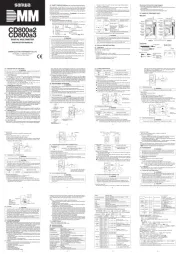
22 Juni 2025
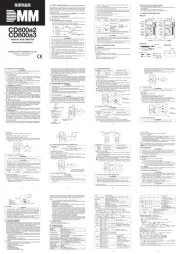
22 Juni 2025

7 December 2024

6 Januari 2024

6 Januari 2024

6 Januari 2024

6 Januari 2024

5 Januari 2024

5 Januari 2024

5 Januari 2024
Handleiding Multimeter
- Digi-tool
- Kyoritsu
- Weidmüller
- Appa
- PeakTech
- Fluke
- Parkside
- Somogyi
- Kurth Electronic
- Testboy
- Skandia
- Caltek
- Kewtech
- Brandson
- Velleman
Nieuwste handleidingen voor Multimeter
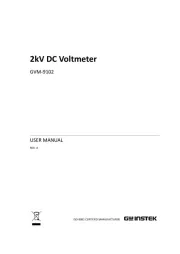
8 September 2025
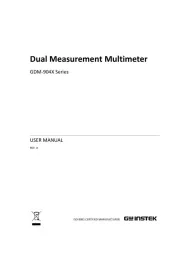
8 September 2025
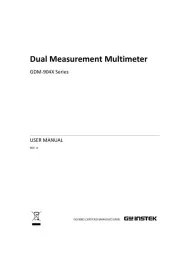
8 September 2025
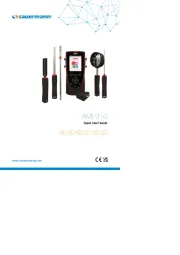
1 September 2025
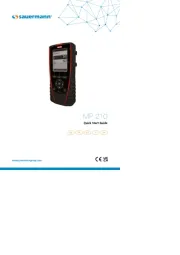
1 September 2025
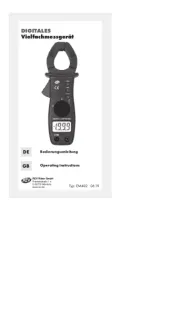
30 Augustus 2025
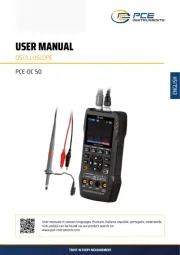
25 Augustus 2025
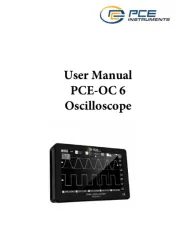
25 Augustus 2025
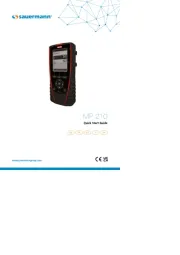
14 Augustus 2025
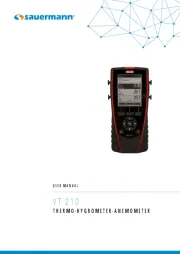
14 Augustus 2025